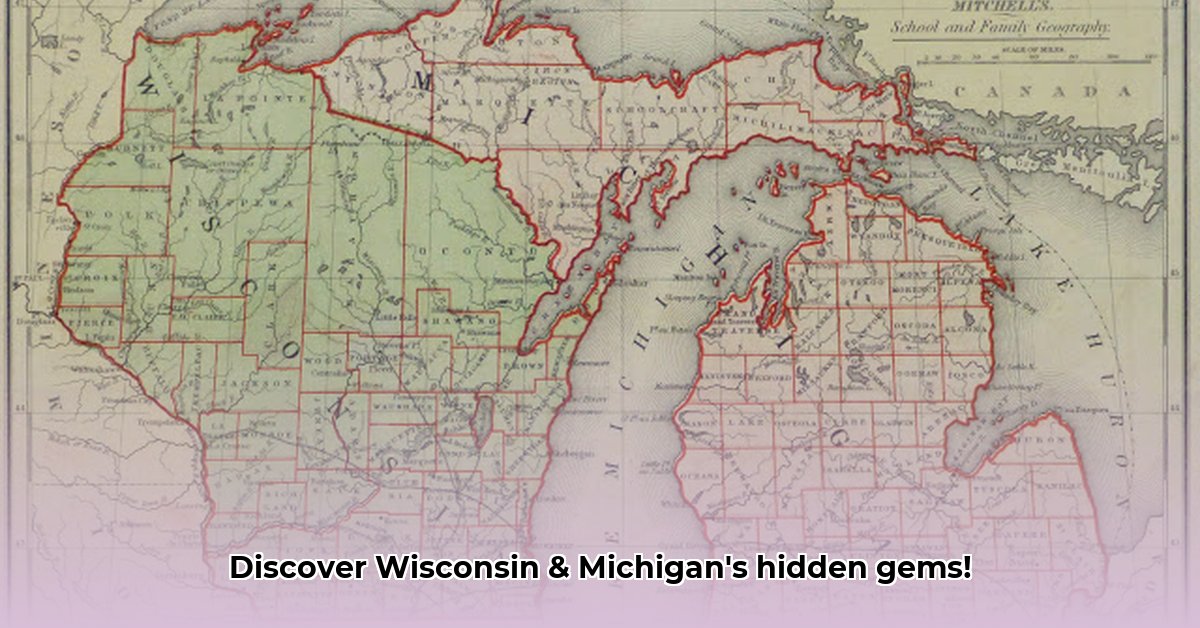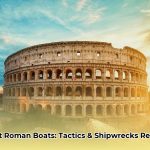Ever wondered about the intricate border between Wisconsin and Michigan? It’s a captivating boundary shaped by vast lakes, rich history, and diverse geography. This exploration will guide you through this unique region, decoding the map to enhance your understanding and confidence in planning adventures. For broader regional maps, check out this Southeast US map. Discover the secrets of this distinctive area!
Wisconsin and Michigan Map Insights: Unveiling Geographic Features
Embark on a visual exploration of the shared border of Wisconsin and Michigan! This journey reveals how land and water have shaped this incredible region.
Border Geography: The Defining Role of Lakes
The map of Wisconsin and Michigan reveals the dominant presence of the Great Lakes – Michigan and Superior – along the northern border. This creates a dynamic, watery boundary marked by islands and inlets. Capturing this intricate shoreline requires incredible detail. This natural boundary influences the region’s ecosystem and economy. In contrast, the southern border is shaped by land and settlement patterns. How does this aquatic frontier impact the lives of the region’s inhabitants?
Landscape Diversity: A Mosaic of Terrains
The area boasts an incredibly diverse landscape. Picture the rolling hills of southern Wisconsin contrasting with the rugged rock formations of Michigan’s Upper Peninsula. Wisconsin’s Driftless Area, untouched by glaciers, stands as a unique geological marvel. This diversity influences land use, from farming to outdoor adventures. What distinguishes the Driftless Area as a remarkable natural landmark?
Regional Economy: Harnessing Natural Beauty
The Wisconsin-Michigan border region leverages its natural beauty as a powerful economic driver. Tourism thrives, with attractions like the Apostle Islands and Door County drawing visitors and boosting local economies. Michigan’s Upper Peninsula offers its own stunning scenery and outdoor activities. Agriculture and fishing also play vital roles, while the brewing industry contributes to the region’s cultural identity. Did you know Wisconsin ranks among the top states for beer production?
Border Region Travel Guide: Essential Exploration Tips
Effective map usage is crucial for exploring this area. Here’s how to maximize your journey:
- Detailed Maps: Utilize detailed maps, both physical and digital, showcasing major and minor roads, waterways, and hiking trails. Supplement online tools with reliable guidebooks or printed maps.
- Navigating Waterways: Exercise caution when boating, given the numerous islands and reefs. Consider hiring a local guide or consulting nautical charts for safe navigation.
- Weather Awareness: Monitor weather forecasts, as conditions can be unpredictable, especially in winter. Be prepared for potential road closures and ferry service disruptions.
- Leave No Trace: Practice responsible travel by packing out all trash, adhering to fishing and hunting regulations, and protecting sensitive ecosystems.
Geographic Synthesis: Unveiling the Border’s Mysteries
The map of Wisconsin and Michigan represents geological history, human settlement, and economic development. Its complexity is captivating. The interaction of land and water, diverse landscapes, and economic forces create a compelling narrative. Explore this beautiful border region with a map in hand, and discover the stories etched into its landscape.
Navigating the Wisconsin Michigan Border Region by Boat
Key Takeaways:
- Lake Michigan offers two primary ferry routes: Ludington (MI) to Manitowoc (WI) via the S.S. Badger, and Muskegon (MI) to Milwaukee (WI) via Lake Express.
- Route selection depends on budget, travel time, and desired amenities. The S.S. Badger offers a longer, scenic journey, while Lake Express provides a faster, modern experience.
- Peak season is summer; services may be limited off-season. Weather significantly impacts schedules.
- Advance planning is essential, including booking tickets and checking weather updates.
Ferry Travel: A Lake Michigan Course
Consider a lake journey instead of a road trip. Lake Michigan’s ferries offer a unique perspective on the Wisconsin-Michigan border region, bridging the states memorably. Choose between the S.S. Badger and Lake Express.
The S.S. Badger offers a leisurely voyage with old-world charm. Lake Express utilizes high-speed catamarans for speed and modern amenities. Which experience suits you best?
Lake Michigan Navigation: Planning Essentials
Careful planning is crucial. Both routes are weather-dependent. Check forecasts and book tickets in advance, especially during summer. What are the historical weather patterns that most impact Lake Michigan ferry services?
Confirm pet policies and factor in boarding/disembarkation times. Allow time for potential delays.
Inland Waterways: Beyond Ferries
The region features an intricate network of inland waterways. Charter a smaller boat for personalized exploration. This offers flexibility but demands navigational expertise and familiarity with local regulations. A detailed nautical chart is indispensable. What’s the most secluded spot accessible by boat on Green Bay?
Boating Safety: Essential Preparation
Respect Lake Michigan’s power. Prepare thoroughly, check equipment, and communicate your boating plan. According to the U.S. Coast Guard, what are the common causes of boating accidents on the Great Lakes?
Wisconsin Michigan Border Region Tourism Infrastructure Development Strategies
Key Takeaways:
- Navigation requires detailed map study and understanding of regional nuances.
- Pre-trip planning is essential, including route selection and identifying landmarks.
- Unique geography, especially around Lake Superior and Door County, requires offline map use.
- Digital tools are convenient, but traditional map skills are vital for safety.
- Effective strategies involve improved signage, map accuracy, and smart infrastructure.
Navigational Mastery: Wisconsin and Michigan Journey
Explore the shared landscape of Wisconsin and Michigan, from Lake Superior’s shoreline to Door County’s charming towns. Simply relying on GPS may not suffice due to the blend of urban and remote landscapes.
Paper Maps: Traditional Cartography
Digital maps have limitations, especially off the beaten track. Cell service can be unreliable. A paper map becomes essential.
Preparing for the Route
Before traveling, acquire maps from sources like the Wisconsin Department of Transportation
Leveraging Digital Resources
Embrace digital tools such as mapping apps for real-time insights.
The Art of Route Selection: Balancing Efficiency and Adventure
Consider route options based on weather updates.
Essential Landmarks: Defining Navigation Points
Identify recognizable landmarks to orient yourself.
The Unpredictability of the Path: Embracing Flexibility
Factor in unexpected delays.
Alternative Routes: Planning for Contingencies
Consider alternative routes as backups.
Integrating Traditional and Modern Techniques
Combining traditional map reading with digital tools optimizes your journey.
Prioritizing Visitor Safety: Infrastructure Considerations
Safety is paramount when navigating.
Investing in Local Navigation Resources: Empowering Communities
Invest in local visitor centers.
Building Digital Infrastructure: Enhancing the Tourist Experience
Enhance cell service in remote areas.
Promoting Sustainable Tourism Practices: Preserving Natural Beauty
Promote responsible tourism. What specific initiatives could effectively promote responsible tourism practices in Door County?
Conclusion: Navigational Empowerment
Navigating the region requires comprehensive preparation, using digital tools while respecting the wisdom of traditional cartography.










